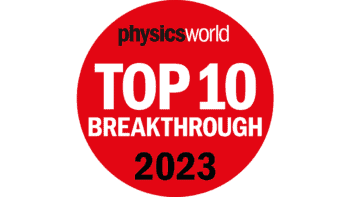Alison Walker reviews:
Project Sunshine: How Science Can Use the Sun to Feed and Fuel the World
Tony Ryan & Steve McKevitt
2013 Icon Books £16.99hb 320pp

By 2050 the world’s population will have reached nine billion. How can the Earth provide the resources to sustain all these people? This topic is tackled in the book Project Sunshine, in which authors Tony Ryan and Steve McKevitt explain how world population growth has led to a “perfect storm” of intertwined water, food and energy shortages, with climate change as a backdrop.
The book’s preface and its first two chapters describe how the discovery of fossil fuels was followed by a population explosion, albeit one that is predicted to plateau at the afore-mentioned figure of nine billion. Here, the authors introduce their ideas (which are fleshed out later in the book) on how it is possible to provide sufficient food and energy for nine billion people in a “sustainable” way. The book then takes what appears at first to be a detour, as the authors go back to the Big Bang to explain the various sources of energy that exist. Subsequent chapters describe the evolution of humans and give a brief history of societal developments, showing how human activities before the discovery of fossil fuels were constrained by the time it took for the principal source of energy – wood – to replenish itself.
Descriptions of nuclear power, non-solar renewables, solar power and energy storage show how sufficient energy can be provided for the expanding world population. Food production is also examined, discussing contentious aspects such as genetically modified plants. The final chapter stresses the need to view solar power “as a must-have, not a nice-to-have”, reminding us that this means that the wheel has turned full circle: “Until 350 years ago, mankind was living like any other animal, beholden to the solar cycle.”
The authors – who are respectively a polymer chemist and pro-vice chancellor at the University of Sheffield, and an expert in communications and consumerism – could hardly have picked a more important or universally interesting topic. The latest report by the Intergovernmental Panel on Climate Change (released on 27 September this year) lends their book topicality, as global warming (although not their main focus) is mentioned in many places, while the gap between energy requirements and supply and how to address it are constant preoccupations for anyone who has the remotest interest in current affairs. Ryan and McKevitt address these questions, treading the fine line between being too technical or too woolly. While the authors do have a solar axe to grind, their book also complements Sustainable Energy – Without the Hot Air by the Cambridge physicist David MacKay (UIT, Cambridge 2009), in that both agree it is possible to act to solve energy problems – and, moreover, that it is imperative to do so.
I have quibbles. The authors state early on that “all of our energy comes from the Sun”, yet this is not quite true. Geothermal energy, which is mentioned in the book, results from the radioactive decay of elements inside the Earth; like nuclear power, it originates in elements that were created mainly in supernovae. And on the subject of nuclear power, it is also worth noting that the chapter devoted to it does not talk about waste disposal, even though difficulties with the permanent disposal of high-level waste argue against this form of electricity generation (see “Too hot to handle“). Another quibble is that while the book shares its name with a network of researchers at the University of Sheffield, and the two are related (the aim of the Sheffield “Project Sunshine” is to develop new ways to use the Sun’s energy more efficiently to increase food production and provide renewable energy), this link is not mentioned until page 197.
The authors of Project Sunshine also have little to say about sourcing materials for renewable-energy generation in a sustainable way. For example, a shortage of indium metal is currently forcing a rethink of how to make the transparent conducting films needed for electrodes in solar cells, as these films are currently made from indium tin oxide. And in the chapter on solar power, there is no discussion of thin-film solar cells made from inorganic semiconductors such as copper indium gallium selenide (CIGS) and their sustainable replacements, even though this type of cell offers many advantages. For example, they are typically 50 times thinner than cells made from multicrystalline silicon, and the efficiency of some CIGS cells made on flexible polymer substrates has reached 20% – not far off the 28% of single-crystalline silicon.
Finally, there is no mention of the crash in the price of solar photo-voltaic (PV) modules in the last few years. A consequence of excess production in China, the price crash has made solar cells much cheaper than could have been anticipated just a short while ago, but it has also led to the loss of 100 out of 350 companies that produce them and inhibited development of new PV technologies. As noted in Project Sunshine, the cheapness of the new technologies relative to crystalline silicon has been an important rationale driving their progress. In the light of the fast-changing nature of the field of energy supply, I suggest that the authors might wish to cover such topics in a blog, perhaps one linked to the Sheffield Project Sunshine.
No book can cover everything without sacrificing readability. Several books have been published recently that address the politics of energy, an example being The Energy of Nations by Jeremy Leggett (Routledge, London 2013). Project Sunshine complements these books by placing energy in the context of the history of the planet going back to the Big Bang, and as a result is an absorbing read with a clear story to tell.



